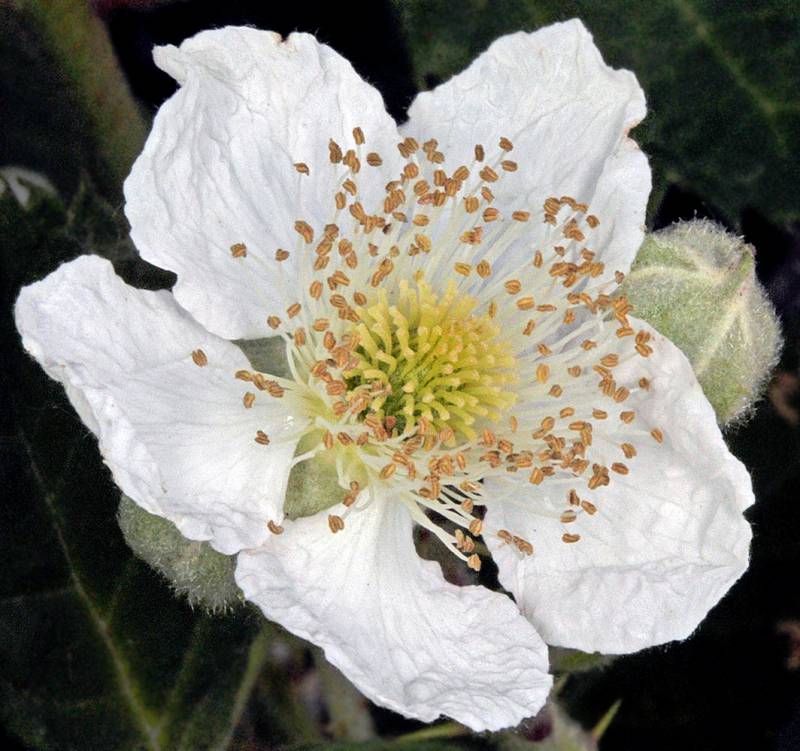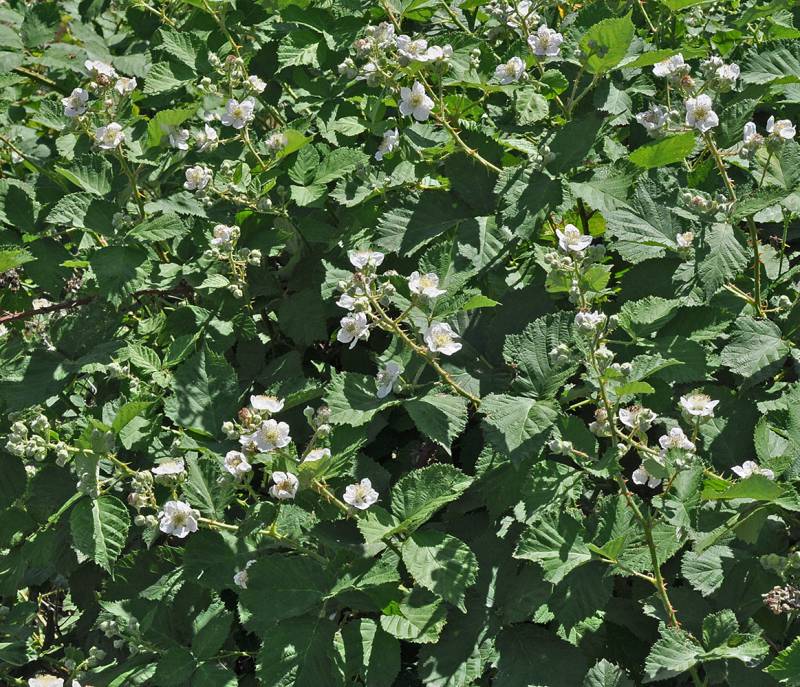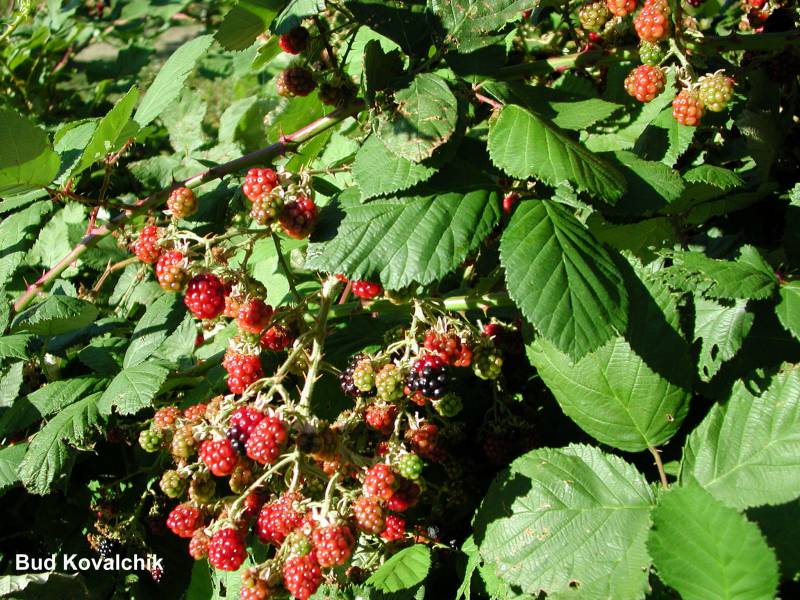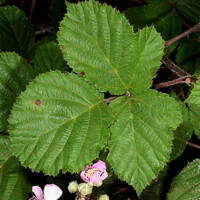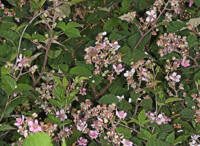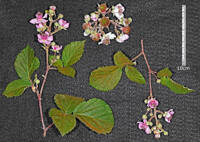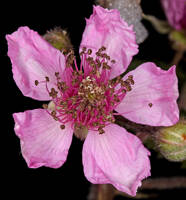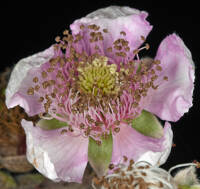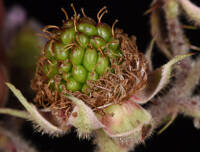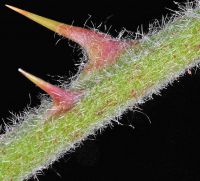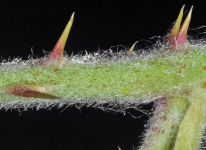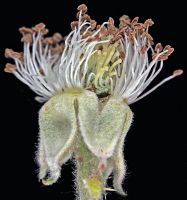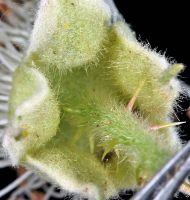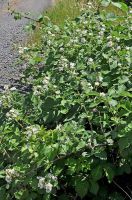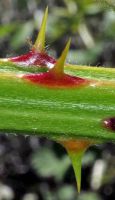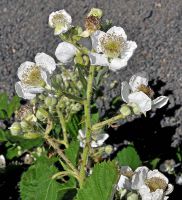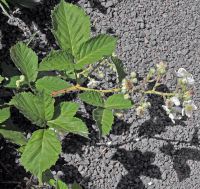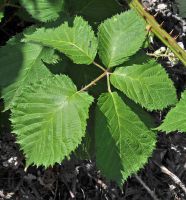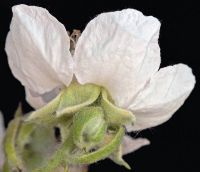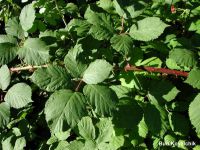Distribution: Occurring in scattered locations on both sides of the Cascades crest in Washington; British Columbia to Oregon, also reported from Idaho.
Habitat: Roadsides and waste ground.
Flowers: April-June
Origin: Introduced from Europe
Growth Duration: Perennial
Conservation Status: Not of concern
Pollination: Apomixis, bumblebees, bees, beetles
Strong perennial with arching to trailing branches up to 3 m. long, well armed with straight, flat prickles up to 7 mm. long.
Leaves alternate, partially evergreen, 3- to 5-foliate; stipules lanceolate, 5-10 mm. long; leaflets ovate to rotund-ovate, acuminate, 5-10 cm. long, doubly serrate, green and glabrous above, paler and pubescent beneath.
Flowers numerous in flat-topped panicles, hairy and stipitate-glandular; calyx white-woolly, the 5 lobes reflexed, lanceolate, acuminate, up to 1 cm. long; petals 5, white, pinkish tinged, 10-15 mm. long; stamens at least 75; pistils numerous, styles glabrous.
Drupelets coherent, and with the receptacle forming a globular blackberry about 1.5 cm. thick.
Differs from Rubus discolor by having straight instead of curved spines, and stipitate-glandular instead of eglandular inflorescence.
Publication: Comp. Fl. Germ. 1: 684. 1825.
PNW Herbaria: Specimen records of Rubus vestitus in the Consortium of Pacific Northwest Herbaria database
WA Flora Checklist: Rubus vestitus checklist entry
OregonFlora: Rubus vestitus information
E-Flora BC: Rubus vestitus atlas page
CalPhotos: Rubus vestitus photos

